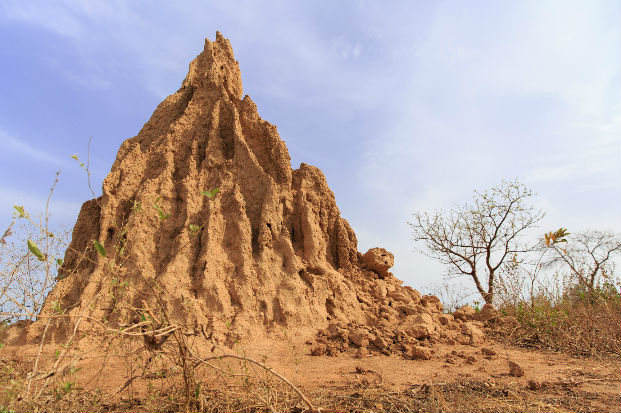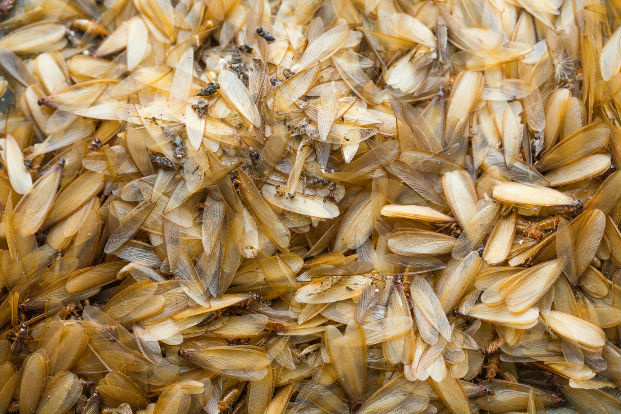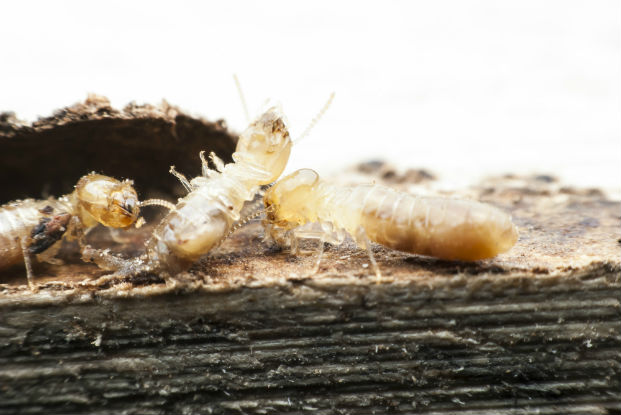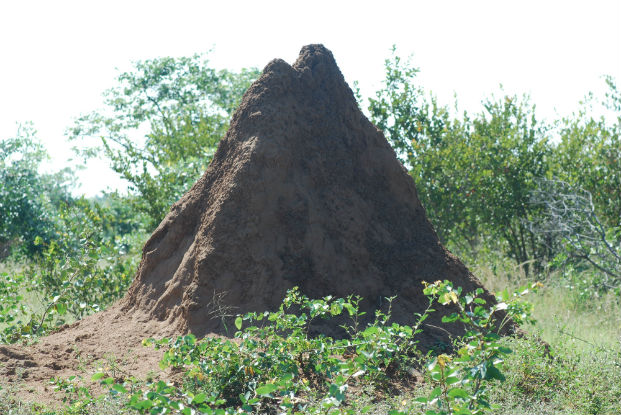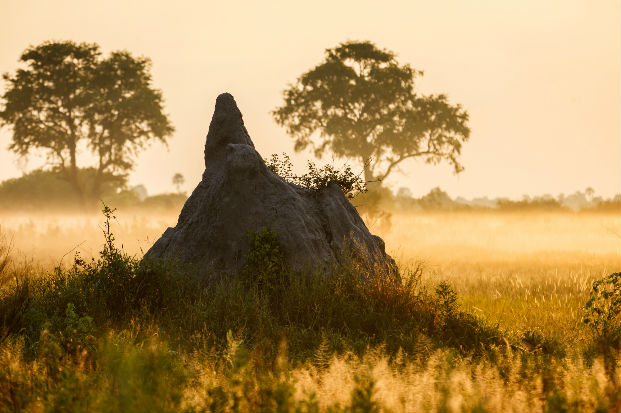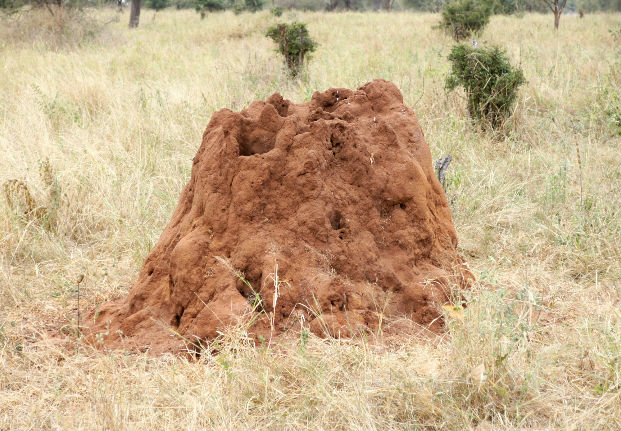Termites belong to the infra order Isoptera which includes over 2,600 species worldwide. They are often referred to as ants which they are not. They are in fact more closely related to cockroaches.
A colony of termites will include different castes, all with specific roles. They build large nests housing an entire colony of up to several million individuals.
They feed on dead and decaying plant material such as leaf litter, soil and wood. The large termite mounds, termitaria, are created by fungus-growing termites (Macrotermes natalensis).
The mound is an elaborate air conditioning system that keeps the nest at a constant temperature and circulates fresh air throughout.
Definitive guide to termites / Termitidae
- Interesting facts about termites
- Full length documentary on termites
- Termites: Frequently asked questions
- Vote for your favourite termite fact
Interesting facts about termites
1. A keystone species
Termites are a keystone species, without them the ecosystem in which they live would be incredibly different or may actually cease to exist.
2. Queen lifespan
A termite queen may live up to 45 years old, at the end of her life she may be licked to death by the workers. At this point the workers will feed a royal jelly (chemical) to a nymph which will prompt it develop as a queen.
3. Collective weight of termites
When added together the weight (biomass) of all termites in the savanna exceeds the biomass of all the herbivores e.g. buffalo, antelope, giraffes.
4. Termite king and queen
Unlike ants that mate only once, the female stores the male’s sperm for future use, the termite king and queen mate daily. The result being up to 30,000 eggs being laid each day.
At 30,000 eggs a day the termite queen can produce almost 165 million eggs in her lifetime.
Video length: 2 minutes 38 seconds. Video source: National Geographic
5. Soldier termites
If the colony is in danger, say from an ant attack, the soldier termites will tap on the walls of the tunnels to alert the rest of the colony. This may prompt the workers to seal the queen into her chamber for protection.
6. Termite mounds
The large termite mounds, termitaria, are created by fungus-growing termites (Macrotermes natalensis). The mound acts as an elaborate air conditioning system which keeps the nest at a constant temperature of 31 degrees centigrade and circulates fresh air throughout.
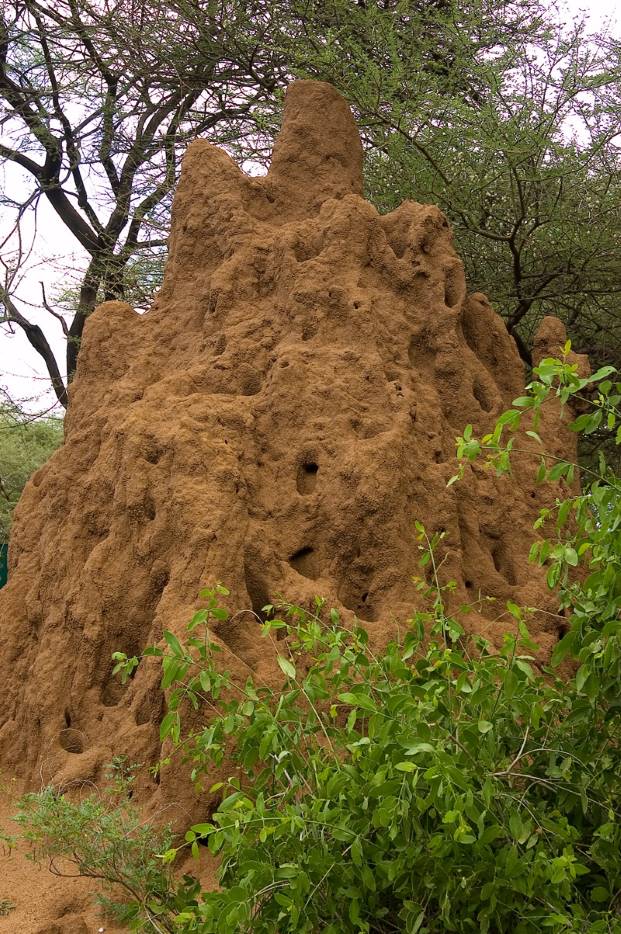
Vierka Maráková, Slovakia, Public domain, via Wikimedia Commons
7. Chemical signals
A queen termite runs the colony via chemical signals (pheromones), these are exchanged across the colony by the sharing of food and saliva. Such signals may prompt her to produce termites of a certain caste, e.g. more soldiers if many had recently been killed.
8. Different castes
A colony of termites will include different castes, all with specific roles. Kings and queens are responsible for reproduction, soldiers for defence, workers for general tasks and alates establish new colonies. Each type of caste looks different but they are genetically identical.
Full length documentary on termites
They cannot tolerate sunlight; some of them are even blind. However they are one of the world’s most ingenious builders.
Video length: 52 minutes. Video Source: The Secrets of Nature
Termites: Frequently asked questions
- What is termitidae?
- What is Isoptera?
- What is the scientific name of termites?
- How big is a termite?
- What does a queen termite look like?
- Queen termite video
- What is a termite mound?
- What is a termitaria?
- How big are termite mounds?
- What does the inside of a termite mound look like?
- What do termite mounds look like?
- What are termite mounds made of?
- Vote for your favourite termite fact
What is termitidae?
Termitidae are the scientific family which the higher termites belong to. This family are evolutionary speaking the most specialised group of termites. They rely on symbiotic bacteria in their guts to digest cellulose rather than bacteria and protozoa required by the lower termites.
Fungus growing termites, Macrotermes natalensis, belong to the family termitidae.
What is Isoptera?
Isoptera is the infraorder for termites, this is part of the scientific classification hierarchy. Within Isoptera there are 12 families although three of which are extinct. The Termitdae family belong to the infraorder, Isoptera.
What is the scientific name of termites?
Termites belong to the Infraorder Isoptera. In Africa there are 1,000 different termites species. Within the infraorder there are 9 living families (plus 3 extinct). The Termitdae family contain 8 sub-families. Sub-family Macrotermitinae which includes the fungus growing termite, Genus: Macrotermes, Species: natalensis. The resulting binomial name is Macrotermes natalensis.
How big is a termite?
There are over 3,100 termite species with approximately 200 still to be described. Given the sheer number of species there is a size range. A full grown termite will usually measure between 4 and 15 millimetres. However, the queen can be much bigger, measuring up to 10cm.
What does a termite queen look like?
The following photograph shows a mature termite queen surrounded by worker and soldier termites. the species is Nasutitermes exitiosus.
Queen termite video
https://youtu.be/4Gbx5C3BoAE
Video length: 1 minute 25 seconds. Video Source: Jay Toma
What is termite mound?
A termite mound is a complicated system of tunnels and conduits providing ventilation to the underground nest. The mound is built above ground with the nest below. Shafts provide ventilation to the cellar located below the nest. This ventilation system can keep the termite nest as a constant temperature.
What is termitaria?
A termitaria is the name given to the large mounds which are built by termites. In Africa fungus-growing termites build mounds which are 2 to 3 metres high.
How big are termite mounds?
In Africa the termites build mounds which are 2 to 3 metres high. But in some countries mounds can be 9m high and others 30m wide. CNN reports that in northeastern Brazil scientists have discovered over 200 million termite mounds covering an area the size of Great Britain.
These mounds maybe 4,000 years old and are up to 10m high. Read the full story on the Brazilian termites.
What does the inside of a termite mound look like?
Below is a cross section of a termite mound. This is the above ground section and does not include the nest which is located below the ground.

Shyamal, CC BY-SA 3.0, via Wikimedia Commons
What do termite mounds look like?
Have you ever wondered what termite mounds look like. Here are several pictures taken from across the continent of Africa.
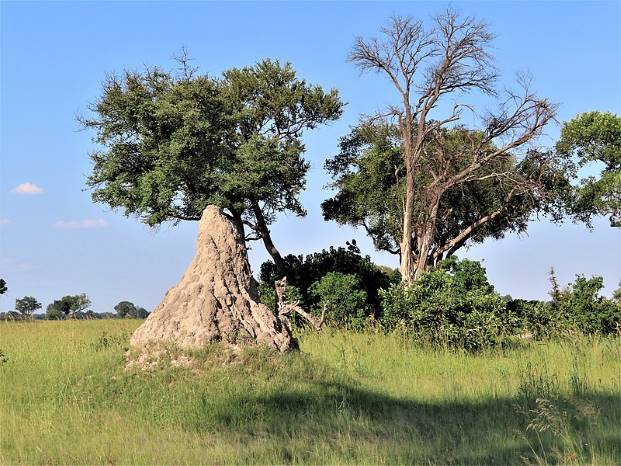
Cosal, CC BY-SA 4.0, via Wikimedia Commons

Lothar Herzog from Kassel, Germany, CC BY 2.0, via Wikimedia Commons

Bernard Gagnon, CC BY-SA 3.0, via Wikimedia Commons
What are termite mounds made of?
Fungus-growing termite mounds, or termitaria as they are also know are made with a mixture of soil, saliva and faeces which dry as hard as concrete. These structures can withstand being used as a rubbing post by elephants and rhinos.
Vote for the fact you find most fascinating
The large termite mounds, termitaria, are created by fungus-growing termites (Macrotermes natalensis). The mound acts as an elaborate air conditioning system which keeps the nest at a constant temperature of 31 degrees centigrade and circulates fresh air throughout.
When added together the weight (biomass) of all termites in the savanna exceeds the biomass of all the herbivores e.g. buffalo, antelope, giraffes.
Termites are a keystone species, without them the ecosystem in which they live would be incredibly different or may actually cease to exist.
A queen termite runs the colony via chemical signals (pheromones), these are exchanged across the colony by the sharing of food and saliva. Such signals may prompt her to produce termites of a certain caste, e.g. more soldiers if many had recently been killed.
Unlike ants that mate only once, the female stores the male’s sperm for future use, the termite king and queen mate daily. The result being up to 30,000 eggs being laid each day.
A termite queen may live up to 45 years old, at the end of her life she may be licked to death by the workers. At this point the workers will feed a royal jelly (chemical) to a nymph which will prompt it develop as a queen.
A colony of termites will include different castes, all with specific roles. Kings and queens are responsible for reproduction, soldiers for defence, workers for general tasks and alates establish new colonies. Each type of caste looks different but they are genetically identical.
If the colony is in danger, say from an ant attack, the soldier termites will tap on the walls of the tunnels to alert the rest of the colony. This may prompt the workers to seal the queen into her chamber for protection.



